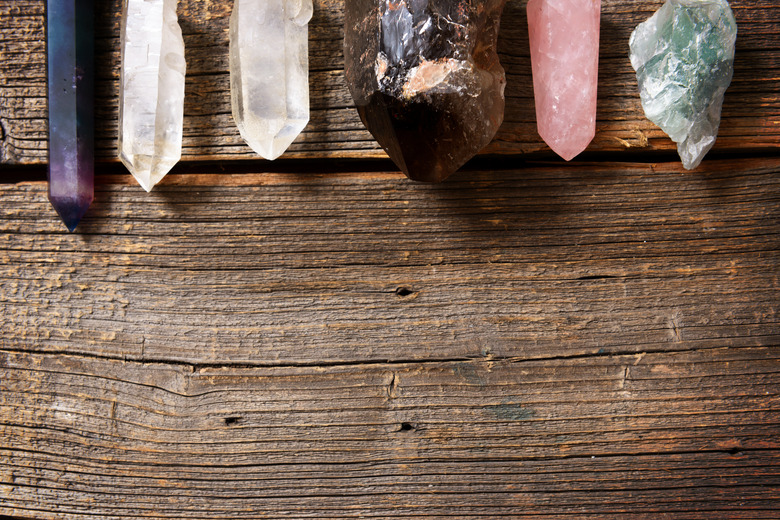How To Use Crystals To Generate Electricity
Crystals, such as quartz, can be tapped for electricity using a piezoelectric (mechanical energy discharge) method. By securing the crystal and subjecting it to direct force with a permanent magnet, a detectable amount of electricity is released. This technology is used in cigarette lighters and gas grill ignition buttons; the unit requires no battery cell to operate. Continuously rapping on the crystal will produce usable electrical current. Making a small crystal electrical generator will take the average backyard inventor about a half-hour.
Step 1
Cut the insulated wire into two parts using the blade section of the wire stripper.
Step 2
Strip all four ends of the two wires, exposing about a half-inch of copper filament on each end. Twist the ends of the wires into tight coils if using a multiple-filament wire.
Step 3
Solder each wire to the back of a separate electrode. The electrode should have an adhesive backing that will allow it to attach to objects. If no electrodes are being used, simply drop a large glob of solder onto one end of each wire, about half the size of a dime.
Step 4
Attach one electrode to the quartz crystal by pressing the adhesive backing onto a flat section. Without electrodes, press the glob of solder against the crystal and secure with a couple drops of glue. Without glue or electrodes, strip the wire down to an exposed length that is long enough to wrap around the crystal tightly.
Step 5
Attach the other electrode to the permanent magnet, using the same methods used to attach to the crystal.
Step 6
Attach the two remaining wire ends to the voltmeter's electrodes (polarity is not important). Set the voltmeter for a low power setting (~1v).
Step 7
Strike the crystal with the magnet, but not hard enough to cause damage. The voltmeter will show a spike when the crystal is hit with the magnet. By striking the two together repetitively, a current can be generated and stored.
Things Needed
- Small quartz crystal
- Relatively sized natural (permanent) magnet
- 2 feet of 16-gauge insulated wire
- Soldering gun and solder
- Sticky electrodes, or glue
- Wire stripper
- Voltmeter
TL;DR (Too Long; Didn't Read)
Use larger crystals and magnets for a larger discharge.
Warning
Use protective eye wear when striking the crystal.
Cite This Article
MLA
Laurens, Eli. "How To Use Crystals To Generate Electricity" sciencing.com, https://www.sciencing.com/use-crystals-generate-electricity-6729045/. 13 March 2018.
APA
Laurens, Eli. (2018, March 13). How To Use Crystals To Generate Electricity. sciencing.com. Retrieved from https://www.sciencing.com/use-crystals-generate-electricity-6729045/
Chicago
Laurens, Eli. How To Use Crystals To Generate Electricity last modified March 24, 2022. https://www.sciencing.com/use-crystals-generate-electricity-6729045/
